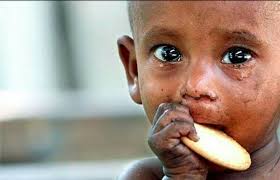 Prof. Raj Kishore Panda in Bhubaneswar, August 23, 2020: India’s duel with poverty has been going on for decades and accordingly the country has made remarkable progress in reducing extreme poverty and improving the living standards of much of its population. As per latest available report of UNDP ( 2019),between 2005-06 and 2015-16 about 271 million people are lifted out of extreme poverty in the country.
Prof. Raj Kishore Panda in Bhubaneswar, August 23, 2020: India’s duel with poverty has been going on for decades and accordingly the country has made remarkable progress in reducing extreme poverty and improving the living standards of much of its population. As per latest available report of UNDP ( 2019),between 2005-06 and 2015-16 about 271 million people are lifted out of extreme poverty in the country.
However with the onset of the pandemic causing massive decline in employment and income last year there is indication that the percentage of the Indians living below the poverty line has begun to rise again. Estimating the impact of Covid-19 Pandemic on India’s poverty, the recent report of the UNDP has shown that about 260 million people will be back in absolute poverty by the end of 2020 – almost the same those lifted between 2006-2016.
Studying on the status of poverty in the country in the post- one year of Covid-19 the Centre for Sustainable Development, Azim Premji University reveals that due to massive job losses and fall in per capita income between January, 2020 to October, 2020, there has been sharp rise in the number of people, (approximately 230 million) living below the National Minimum Wage threshold of Rs 375/- per day ( as recommended by Anoop Satpathy Committee, 2017).
Added to this, as it is reported, the Covid-19 pandemic has worsened inequality in the country. Despite a sharp fall in GDP growth rate of 7.3 percent in 2020-21, the number of billionaires in the country has gone up from 102 to 140 during the year. The pandemic has enlarged the income gap between top 1 percent and bottom 50 percent in the country. Thus India now presents an unprecedented scenario in which the economy while experiencing the greatest contraction ever in the post-independence period adds to poverty and inequality.
Literature showing the impact of growth in reducing poverty provides varying findings across countries. Countries having similar rates of growth but under different conditions impact poverty reduction differently. Growth-centred narrative says growth is necessary for poverty alleviation but it is not sufficient. Ravallion’s study (1995) goes a step further while emphasizing that not all poverty issues are associated with economic growth.
 Though it is not clear that higher inequality lessens the reduction in poverty, yet as studies reveal, in countries with very low inequality, a given rise in income level leads to higher decline in poverty. In contrast countries with highly unequal society with the same rise in income level poverty rate tend to decline less. In case of India, leaving aside the pandemic which is temporary the development policy initiatives taken all along over the post-independent period have not given adequate attention in creating increasing opportunities for the poor and vulnerable in the society. India’s inequality is driven by unequal opportunities and this leads to uneven distribution of gains from growth.
Though it is not clear that higher inequality lessens the reduction in poverty, yet as studies reveal, in countries with very low inequality, a given rise in income level leads to higher decline in poverty. In contrast countries with highly unequal society with the same rise in income level poverty rate tend to decline less. In case of India, leaving aside the pandemic which is temporary the development policy initiatives taken all along over the post-independent period have not given adequate attention in creating increasing opportunities for the poor and vulnerable in the society. India’s inequality is driven by unequal opportunities and this leads to uneven distribution of gains from growth.
Studies also reveal that inequality in India has made a steady rise over time, particularly in the post-liberalization period due to release of forces heightening the concentration of income and wealth. Studies in this context reveal that the Indian society which is traditionally fractured along the lines of region, caste, gender etc, shows adding up economic inequality steadily. Economic liberalization created widening gap in the labour market where many are excluded from new opportunities. No doubt government policies in India introduced after 2005 through MGNREGA, improving PDS etc have significantly helped in moderating the rise in inequality, yet the scope of social policy is found less leading to formal employment stagnating, minimum wages hardly rose in real terms and the gap between rural and urban areas went up.
A recent study states that 73 percent of wealth generated in the country in 2017 has gone to the richest one percent of the population while 67 million Indians comprising poorest half of the population see only one percent increase in their wealth. Analyzing the data of All India Debt and Investment Survey, Ishan Anand and Anjana Thampi have reported greater concentration of wealth with top 10 percent of population after 2002. Rise in wealth inequality has been massive in the post-liberalization period particularly between 2002-2012 which also include high growth period (2003-08).
In the present context when the country is in the midst of a deep crisis, exclusive dependence on GDP growth to reduce poverty seems too ambitious and unrealistic. The present policy pursued by the Central Government putting emphasis on enhancing availability and access to basic infrastructures- physical ( roads, and electricity), economic ( banking and financial services) and social ( education and health services) for the common masses is certainly in the right direction. All these measures can ensure distributive justice of GDP and thus be able to contain growing inequality in income distribution and help in reducing poverty.
 However, as already stated India’s inequality problem emerges from unequal opportunities. This needs for creating more opportunities by skilling the poor and vulnerable to have upward mobility. This process of inclusive growth would reduce inequality as well as poverty. This requires mobilization of sufficient resources through tax revenue. The present tax policy aiming at overcoming the sluggish economic growth through abolishing wealth tax, reducing corporate tax and income tax needs to be re-looked. We must know that inequality hurts growth and consequently poverty reduction and India’s share both in the world’s multi-millionaires and extreme poor is higher.
However, as already stated India’s inequality problem emerges from unequal opportunities. This needs for creating more opportunities by skilling the poor and vulnerable to have upward mobility. This process of inclusive growth would reduce inequality as well as poverty. This requires mobilization of sufficient resources through tax revenue. The present tax policy aiming at overcoming the sluggish economic growth through abolishing wealth tax, reducing corporate tax and income tax needs to be re-looked. We must know that inequality hurts growth and consequently poverty reduction and India’s share both in the world’s multi-millionaires and extreme poor is higher.


Leave a Reply
Be the First to Comment!